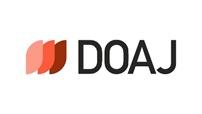Abstract
Brand orientation is a relatively new paradigm in marketing which was first introduced in the 1990s. Since then, an accumulating body of research has addressed the strategic importance of brand orientation. Although there is a growing body of literature on brand orientation, there have been no empirical studies examining the mediation effect of brand orientation on market orientation-performance relationship to date. Moreover, most studies on brand orientation have been carried out in the context of large enterprises. Hence, the aim of this research is to extend the literature and address market orientation, brand orientation. and firm performance against the backdrop of Korean SMEs. The authors empirically investigate the impact of market/brand orientation on organizational performance and the mediating role of brand orientation. They utilize 178 usable responses to test the four research hypotheses. The hypothesized model predicts that there is a positive association among market ori-entation, brand orientation, and firm performance. It is also expected that brand orientation mediates the relationship between market orientation and organizational performance. The statistical results based on PLS analysis confirm our prediction among the constructs in the research model. The em-pirical evidence provides significant theoretical and managerial implications for brand orientation among SMEs. The first theoretical implication is that we provide empirical evidence regarding the important role of brand orientation in explaining the multi-trait perspectives of strategic orientation. The second theoretical implication is that the concept of brand orientation can be empirically vali-dated in the context of SMEs. In terms of managerial implications, managers of SMEs should attempt to build a brand-oriented corporate culture or mindset that places brand values and brand norms as the top priority among their company`s tasks. In addition, managers should recognize that brand ori-entation is critical for SMEs as well as large enterprises. In the last section, the authors address limi-tations of the study and provide directions for further research.
Recommended Citation
Park, Sang Il and Kim, Mi Jeong
(2013)
"Does Brand Orientation Matter? An Empirical Study of Korean SMEs,"
Asia Marketing Journal: Vol. 14
:
Iss.
4
, Article 7.
Available at: https://doi.org/10.53728/2765-6500.1503
Creative Commons License

This work is licensed under a Creative Commons Attribution 4.0 License.





